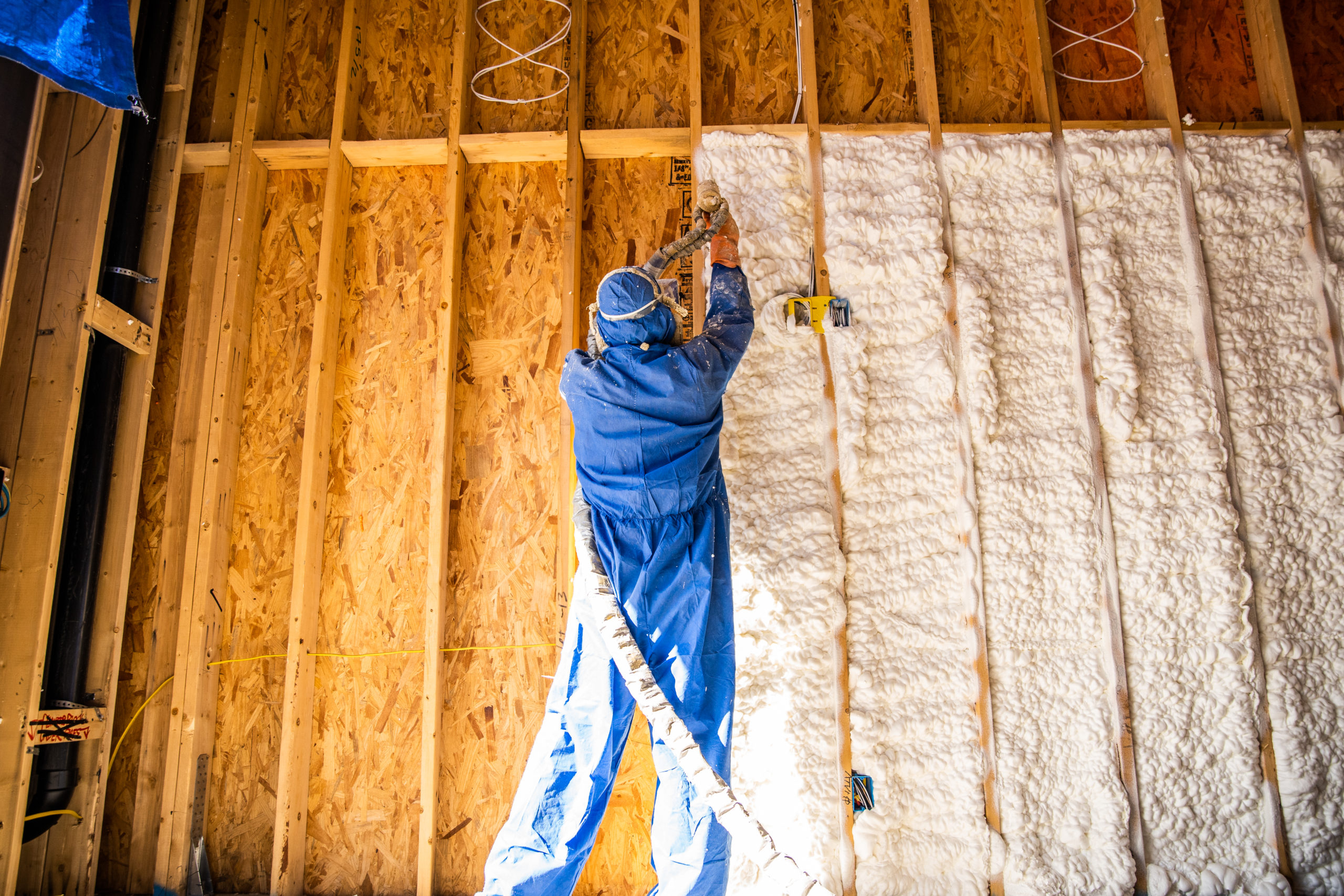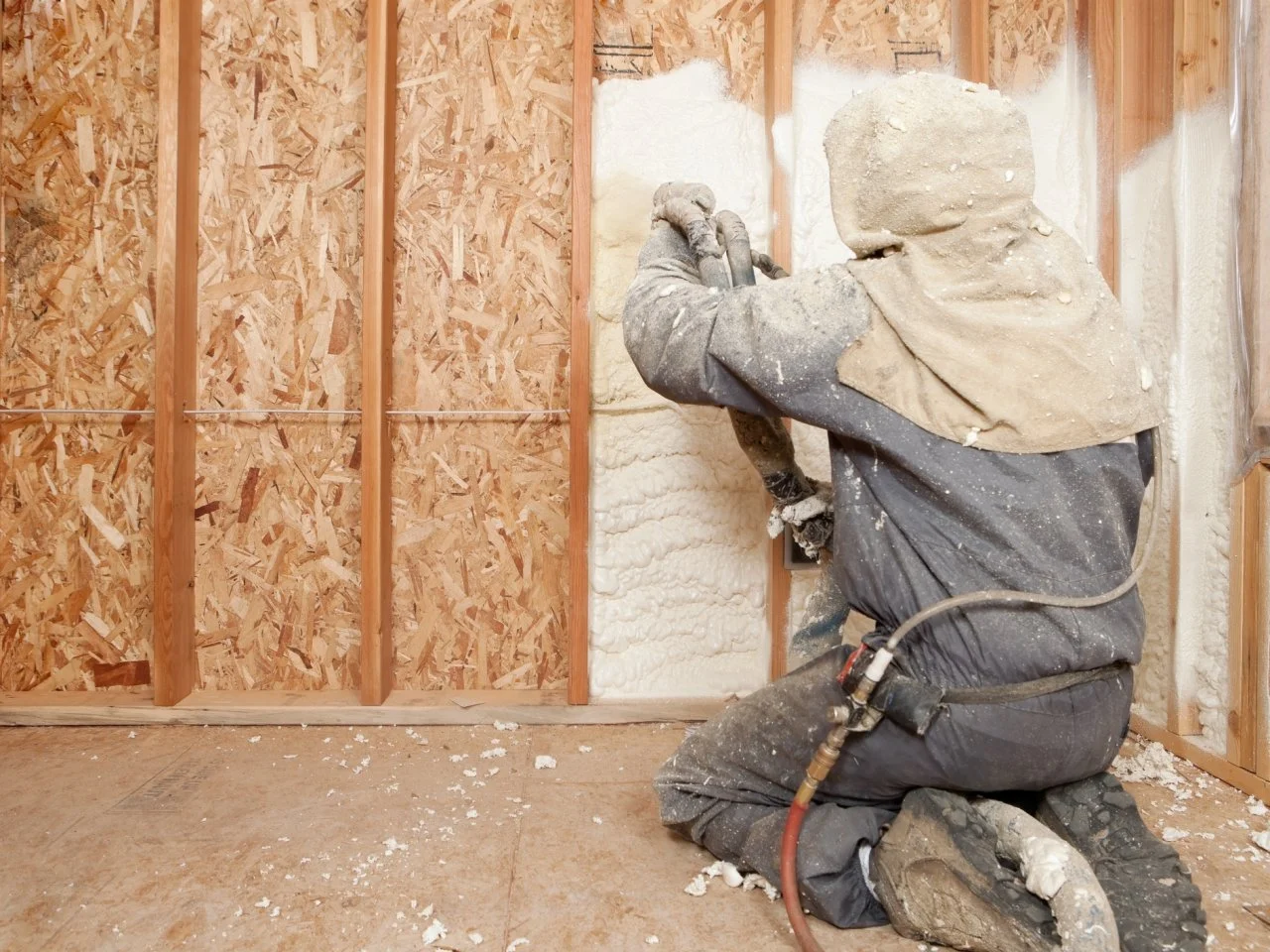Frequently Asked Questions Regarding Spray Foam Installation and Use
Frequently Asked Questions Regarding Spray Foam Installation and Use
Blog Article
Spray Foam: The Ultimate Remedy for Air Sealing and Insulation
Spray foam insulation has actually emerged as a leading solution for reliable air sealing and thermal insulation, using an unique combination of buildings that establish it apart from conventional techniques. Comprehending the complete extent of its benefits, installation processes, and comparisons with various other insulation kinds is critical for making notified decisions.
What Is Spray Foam?
Spray foam is a functional insulation material that combines the concepts of air sealing and thermal resistance to boost power efficiency in structures. Made up largely of polyurethane or various other similar compounds, spray foam is applied as a fluid that expands upon contact with surfaces, creating a solid, constant layer of insulation. This special residential or commercial property enables it to fill up gaps, cracks, and spaces that standard insulation materials might ignore, offering a remarkable air seal.
There are 2 primary sorts of spray foam: open-cell and closed-cell. Open-cell spray foam is lighter and extra flexible, offering outstanding sound absorption and a reduced R-value per inch - Spray Foam. On the other hand, closed-cell spray foam is denser, providing a higher R-value, moisture resistance, and added architectural honesty to developing parts
The application process normally includes specialized equipment, guaranteeing a seamless application that sticks to various substratums, including wood, concrete, and metal. This adaptability makes spray foam ideal for both new constructions and retrofitting existing structures. Its capability to produce an airtight barrier substantially contributes to decreasing energy intake and boosting interior air top quality, thereby making it a favored choice among home owners and home builders alike.
Advantages of Spray Foam Insulation
Among the most considerable advantages of spray foam insulation is its remarkable ability to create a continual air obstacle, which efficiently reduces power loss. Unlike standard insulation materials, spray foam broadens to fill up cracks and voids, making sure that air leakage is drastically minimized. This characteristic not just enhances power performance yet also brings about lower utility bills with time.
In addition, spray foam insulation provides superior thermal resistance, contributing to an extra secure indoor setting. Its high R-value per inch allows for reliable insulation in confined rooms, making it suitable for attic rooms, walls, and crawl rooms. The moisture-resistant residential properties of spray foam assistance avoid mold and mildew and mildew development, promoting healthier living problems.
An additional essential benefit of spray foam insulation is its sound-dampening high qualities (Spray Foam). It efficiently lowers noise transmission between areas, creating a quieter and a lot more comfy home environment. The durability of spray foam also attracts attention, as it does not sag or work out over time, preserving its efficiency throughout its life expectancy
How Spray Foam Works
Recognizing how spray foam insulation functions is essential for appreciating its efficiency in air sealing and thermal resistance. Spray foam insulation consists of two primary components: isocyanate and polyol resin. When these elements are combined, they undertake a chain reaction that causes the material to broaden quickly, producing a thick foam that loads gaps, cracks, and cavities.
As the foam increases, it follows surfaces, forming a closed seal that considerably lowers air infiltration. This characteristic makes spray foam insulation extremely reliable at protecting against drafts and wetness penetration, which can lead to power loss and damage gradually. Additionally, the closed-cell version of spray foam offers remarkable thermal resistance due to its inflexible structure, effectively minimizing warm transfer.
The one-of-a-kind homes of spray foam enable it to comply with uneven surfaces, making sure thorough coverage and a seamless obstacle. As an outcome, spray foam insulation not only boosts energy effectiveness yet also adds to enhanced interior air high quality by reducing the buildup of toxins and allergens. Inevitably, understanding the auto mechanics behind spray foam emphasizes its duty as an exceptional option for click reference insulation and air securing in both household and industrial applications.
Setup Process Summary

Prior to installation, the space must be effectively cleansed and prepped, making sure that surface areas are without particles, dirt, and moisture. This action is critical due to the fact that impurities can endanger adhesion and overall performance. Once the area is prepared, the application includes blending the 2 elements of the spray foam, which expands upon get in touch with and fills spaces properly.
Educated professionals ought to perform the setup, using specialized tools to make sure uniform insurance coverage and optimum density. Security precautions, including putting on protective equipment and ensuring correct ventilation, are important throughout this procedure. After application, the foam typically remedies promptly, developing a solid obstacle that boosts power performance.
Comparing Spray Foam to Standard Insulation
When evaluating insulation options, spray foam insulation attracts attention in comparison to typical products such as fiberglass and cellulose. One of the key benefits of spray foam is its premium air sealing abilities. Unlike fiberglass and cellulose, which can allow air seepage, spray foam broadens upon application, filling gaps and crevices to develop an airtight seal. This leads to boosted energy performance, as less warmed or cooled down air gets away the home, bring about reduced utility expenses.
Furthermore, spray foam offers a greater R-value per inch than standard insulation types, supplying even more reliable thermal resistance in a thinner profile. This particular is especially advantageous precede with limited dental caries depth. Spray foam is resistant to wetness and mold growth, which can be a considerable problem with cellulose and fiberglass, particularly in moist settings.
Nevertheless, spray foam insulation commonly lugs a higher upfront expense than its traditional counterparts. Property owners should evaluate this preliminary financial investment against lasting energy cost savings and performance advantages. Eventually, while both insulation kinds offer their function, spray foam arises as an extra advanced remedy for modern insulation requirements, specifically in regards to air securing and thermal performance.

Verdict
In summary, spray foam insulation represents a very efficient solution for accomplishing optimum air securing and thermal resistance. Its special residential properties, consisting of dampness resistance and audio dampening, make it suitable for numerous applications in both new buildings and retrofitting jobs (Spray Foam). The preliminary expenses additional hints may be greater contrasted to traditional insulation products, the lasting advantages, such as considerable power financial savings and enhanced indoor air quality, warrant the financial investment and emphasize its worth in modern structure techniques.
Spray foam insulation has actually arised as a leading solution for efficient air sealing and thermal insulation, supplying a special mix of homes that establish it apart from typical approaches.Spray click this foam is a versatile insulation material that incorporates the concepts of air securing and thermal resistance to boost power efficiency in structures.When assessing insulation options, spray foam insulation stands out in contrast to conventional products such as fiberglass and cellulose. Eventually, while both insulation kinds serve their purpose, spray foam emerges as a more innovative solution for modern insulation requirements, specifically in terms of air securing and thermal performance.
In summary, spray foam insulation stands for an extremely effective service for accomplishing optimum air securing and thermal resistance.
Report this page